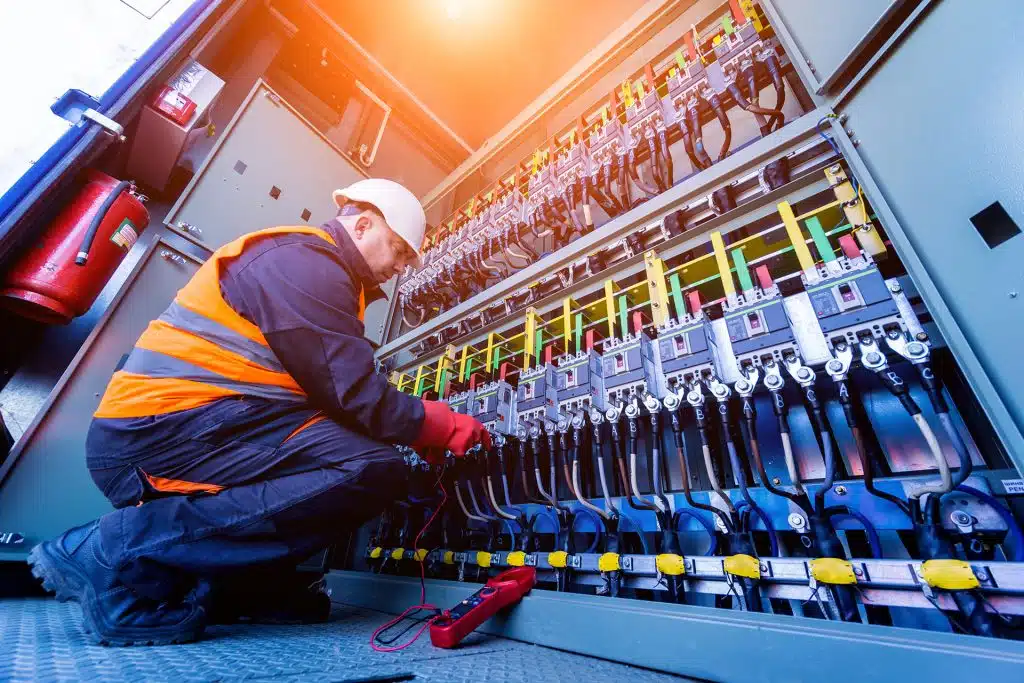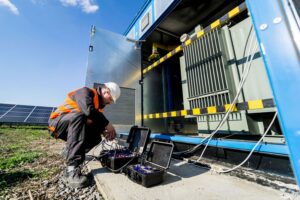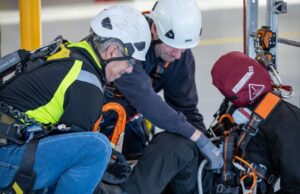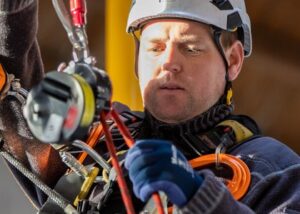Electrical Safety in the Wind Energy Sector: Ensuring Safe and Efficient Operations
The wind energy sector is a rapidly growing industry, contributing significantly to the global shift towards renewable energy. However, it also presents unique challenges, particularly in terms of electrical safety. Wind turbines are complex electrical systems operating under various environmental conditions, often in remote locations. Ensuring electrical safety in this sector is crucial to protect workers, maintain reliable operations, and prevent accidents that could lead to costly downtime or even fatalities. This article will explore the key requirements and best practices for electrical safety in the wind energy sector.
1. Understanding the Electrical Hazards
Wind turbines generate electricity by converting kinetic energy from the wind into electrical energy. The systems involved in this process include high-voltage components, transformers, inverters, and cabling. These components pose several electrical hazards, such as:
- Arc Flash: A sudden release of electrical energy that can cause severe burns, blindness, and even death. Arc flashes can occur during maintenance or when electrical equipment fails.
- Electric Shock: Direct contact with live electrical components can result in electric shock, potentially leading to serious injury or death.
- Fire Hazards: Electrical faults, such as short circuits, can ignite fires within the turbine’s nacelle or electrical cabinets, which are often difficult to extinguish given their location and the presence of high winds.
2. Regulatory and Standards Compliance
Electrical safety in the wind energy sector is governed by various international and national standards. Adherence to these standards is not only a legal requirement but also a best practice for ensuring safety. Key standards include:
- IEC 61400 Series: These are international standards covering all aspects of wind turbines, including safety, performance, and testing. IEC 61400-1, in particular, outlines design requirements that help ensure the electrical safety of wind turbines.
- NFPA 70E: This standard, developed by the National Fire Protection Association, focuses on electrical safety in the workplace, providing guidelines for safe work practices to protect workers from electrical hazards.
- OSHA Regulations: In the United States, the Occupational Safety and Health Administration (OSHA) provides specific regulations for the energy sector, including wind energy, to ensure worker safety.
- ISO 45001: This is an international standard for occupational health and safety management systems, which helps organizations improve employee safety, reduce workplace risks, and create better, safer working conditions.
3. Risk Assessment and Safety Planning
Before any work is conducted on wind turbines, a comprehensive risk assessment must be carried out. This assessment should identify potential electrical hazards and evaluate the risks associated with specific tasks. Key elements include:
- Hazard Identification: Identify all potential electrical hazards associated with the specific tasks to be performed, such as maintenance, repair, or inspection.
- Risk Evaluation: Determine the likelihood and severity of each hazard, taking into account factors like the condition of the equipment, weather conditions, and the experience level of the workers involved.
- Safety Planning: Develop a detailed safety plan that includes control measures to mitigate identified risks. This plan should outline the specific safety procedures to be followed, the protective equipment required, and the emergency response protocols.
4. Training and Competency
Proper training is essential to ensure that personnel working in the wind energy sector are aware of the electrical hazards and know how to mitigate them. Training programs should cover:
- Basic Electrical Safety: Workers should understand the principles of electricity, the dangers of electric shock, and the importance of grounding and bonding.
- Advanced Training: For those directly involved in electrical work, advanced training in topics such as arc flash protection, lockout/tagout procedures, and working at heights is necessary.
- Emergency Response: Workers must be trained in emergency procedures, including how to respond to electrical accidents, administer first aid, and perform rescues in confined spaces or at height.
5. Personal Protective Equipment (PPE)
The use of appropriate PPE is a critical component of electrical safety in the wind energy sector. Depending on the specific tasks and identified risks, PPE may include:
- Arc-Rated Clothing: Protective clothing designed to withstand the thermal hazards of an arc flash. This clothing is rated based on its ability to protect against heat and flames.
- Insulated Gloves and Boots: To prevent electrical shock, workers should wear insulated gloves and boots when working with or near live electrical equipment.
- Safety Helmets: Helmets equipped with face shields or visors provide protection against flying debris and arc flashes.
- Fall Protection Gear: Given the height of wind turbines, fall protection gear, such as harnesses and lanyards, is essential for all personnel working at height.
6. Lockout/Tagout (LOTO) Procedures
Lockout/tagout (LOTO) is a safety procedure used to ensure that electrical equipment is properly shut off and not restarted until the completion of maintenance or repair work. LOTO procedures involve:
- Isolating Electrical Energy: Before any maintenance work begins, the equipment must be completely de-energized by isolating it from its power source.
- Locking Out the Equipment: A physical lock is placed on the power source, preventing it from being turned back on until the work is complete.
- Tagging the Equipment: A tag is attached to the lock, indicating that the equipment is under maintenance and should not be operated. The tag also includes the name of the person responsible for the lockout.
7. Regular Maintenance and Inspections
Routine maintenance and inspections are vital to ensure the ongoing safety and reliability of wind turbines. This includes:
- Preventive Maintenance: Regular checks and servicing of electrical components to prevent failures and reduce the risk of electrical hazards.
- Condition Monitoring: Using technology such as thermal imaging and partial discharge testing to monitor the condition of electrical equipment and identify potential issues before they lead to failures.
- Inspection of Safety Systems: Regular testing and inspection of safety systems, such as grounding systems, circuit breakers, and emergency shutdown mechanisms, to ensure they are functioning correctly.
8. Emergency Preparedness
Despite all precautions, emergencies can still occur. Therefore, it is essential to have robust emergency preparedness plans in place, including:
- Emergency Response Teams: Designate and train personnel to respond to electrical emergencies, including fire, electric shock, and arc flash incidents.
- Rescue Plans: Develop and practice rescue plans for workers who may be injured or incapacitated at height or in confined spaces.
- First Aid Kits and AEDs: Ensure that first aid kits and automated external defibrillators (AEDs) are available and accessible at all wind farm locations.
Conclusion
Electrical safety in the wind energy sector is critical to protecting workers, ensuring reliable operations, and preventing accidents. By adhering to regulatory standards, conducting thorough risk assessments, providing proper training, and implementing robust safety procedures, the industry can mitigate the unique electrical hazards associated with wind turbines. Continuous vigilance and a commitment to safety are essential as the wind energy sector continues to grow and play a pivotal role in the global energy landscape.
Book electrical safety training
Interested in world-class electrical safety training for working on wind turbines? Click the button to find out more and book.




